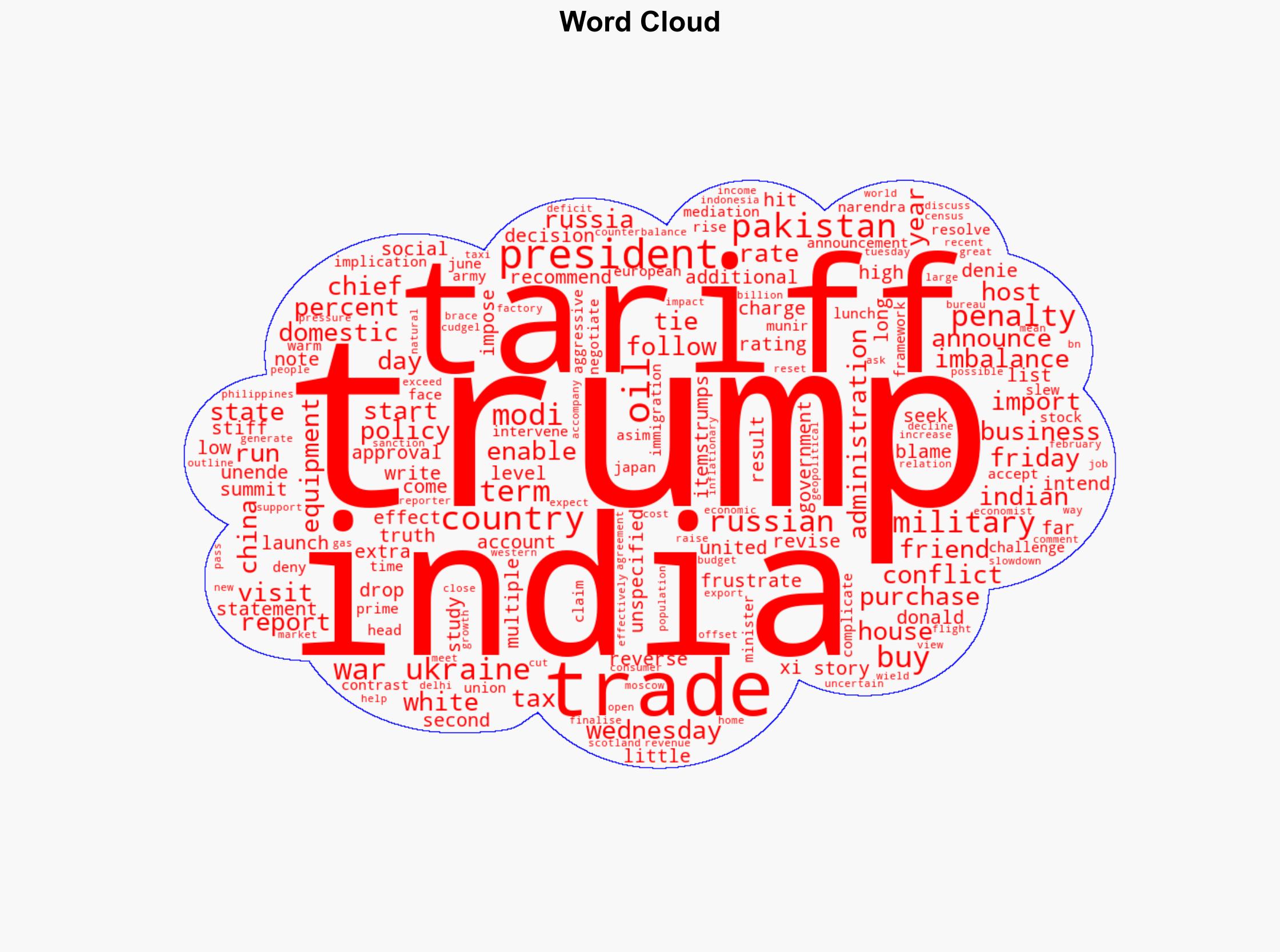Trump hits India with 25 tariff extra penalty for Russian oil purchases – Al Jazeera English
Published on: 2025-07-30
Intelligence Report: Trump hits India with 25 tariff extra penalty for Russian oil purchases – Al Jazeera English
1. BLUF (Bottom Line Up Front)
The imposition of a 25% tariff on Indian goods by Trump, ostensibly due to India’s purchase of Russian oil, may be a strategic maneuver to recalibrate trade imbalances and exert geopolitical pressure. The most supported hypothesis is that this move is primarily aimed at leveraging economic influence to counterbalance India’s alignment with Russia, rather than solely addressing trade deficits. Confidence in this assessment is moderate due to limited corroborative data. Recommended action includes diplomatic engagement with India to clarify intentions and mitigate potential economic fallout.
2. Competing Hypotheses
Hypothesis 1: The tariff is primarily a punitive measure targeting India’s purchase of Russian oil and military equipment, intended to pressure India to align more closely with Western policies on Ukraine.
Hypothesis 2: The tariff is a strategic economic tool aimed at addressing long-standing trade imbalances with India, using the Russian oil purchase as a pretext to justify increased tariffs.
Using ACH 2.0, Hypothesis 2 is better supported. The narrative of addressing trade imbalances aligns with Trump’s historical use of tariffs as economic leverage. The lack of direct evidence linking the tariff solely to Russian oil purchases weakens Hypothesis 1.
3. Key Assumptions and Red Flags
Assumptions include the belief that tariffs will effectively alter India’s purchasing behavior and that economic pressure will translate into geopolitical alignment. A red flag is the absence of specific details on how the tariff will impact bilateral trade negotiations. The potential bias lies in overestimating the economic leverage of tariffs without considering India’s alternative trade partners.
4. Implications and Strategic Risks
The tariff could strain US-India relations, potentially pushing India closer to Russia and China. Economic repercussions may include increased costs for US consumers and businesses reliant on Indian imports. Geopolitically, this move could complicate alliances and trade frameworks, particularly in the Indo-Pacific region.
5. Recommendations and Outlook
- Engage in diplomatic discussions with India to clarify the rationale behind the tariffs and explore mutually beneficial trade solutions.
- Monitor India’s trade responses and potential shifts in geopolitical alliances.
- Scenario projections:
- Best Case: India agrees to reduce Russian oil purchases, leading to tariff reduction and strengthened US-India relations.
- Worst Case: India retaliates with counter-tariffs, escalating trade tensions and aligning more closely with Russia.
- Most Likely: Limited short-term economic impact with ongoing diplomatic negotiations to resolve trade disputes.
6. Key Individuals and Entities
Donald Trump, Narendra Modi, Asim Munir
7. Thematic Tags
national security threats, geopolitical strategy, trade policy, US-India relations





